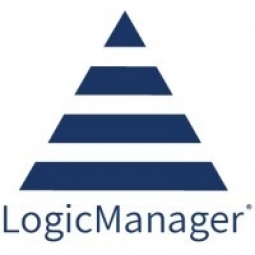Technology Category
- Functional Applications - Enterprise Resource Planning Systems (ERP)
Applicable Industries
- Food & Beverage
- Healthcare & Hospitals
Applicable Functions
- Product Research & Development
- Sales & Marketing
Use Cases
- Inventory Management
- Regulatory Compliance Monitoring
About The Customer
Chipotle is a major player in the food industry, known for its innovative approach to fast food. The company has built its reputation on offering fresh, healthy, locally sourced food. However, a series of salmonella outbreaks linked to food sold in its branches led to a significant reduction in sales and share prices, as well as a damaging civil lawsuit. The company's failure to implement necessary risk management measures to support its innovative approach was identified as a key factor in these issues.
The Challenge
Chipotle, a renowned food industry innovator, faced a significant challenge when it experienced a series of salmonella outbreaks linked to food sold in its branches. The company's reputation for safe, sustainably grown food was severely damaged, leading to a 35% reduction in share prices since the end of October and a 30% drop in December sales in some locations. The situation was further complicated by a civil lawsuit alleging that Chipotle failed to disclose that its quality controls were inadequate to safeguard consumer and employee health. The company's failure to implement necessary risk management measures to support its innovative approach to fast food was identified as a key factor in these issues.
The Solution
The case study suggests that had Chipotle implemented an enterprise risk management (ERM) solution, the outcomes could have been significantly different. ERM extends to a robust vendor risk management methodology that helps identify risks associated with a company's supply chain, which could have prevented the food contamination. Even if the outbreaks had still occurred, Chipotle could have used ERM reporting capabilities to evidence its risk program. This would have avoided regulatory penalties, provided evidence of control activities, and guided risk disclosure, thereby eliminating liability for non-disclosure of risk. The case study cites the example of Morgan Stanley, which avoided prosecution in 2009 thanks to the robustness of its internal policies and procedures.
Operational Impact
Quantitative Benefit

Case Study missing?
Start adding your own!
Register with your work email and create a new case study profile for your business.
Related Case Studies.

Case Study
The Kellogg Company
Kellogg keeps a close eye on its trade spend, analyzing large volumes of data and running complex simulations to predict which promotional activities will be the most effective. Kellogg needed to decrease the trade spend but its traditional relational database on premises could not keep up with the pace of demand.

Case Study
HEINEKEN Uses the Cloud to Reach 10.5 Million Consumers
For 2012 campaign, the Bond promotion, it planned to launch the campaign at the same time everywhere on the planet. That created unprecedented challenges for HEINEKEN—nowhere more so than in its technology operation. The primary digital content for the campaign was a 100-megabyte movie that had to play flawlessly for millions of viewers worldwide. After all, Bond never fails. No one was going to tolerate a technology failure that might bruise his brand.Previously, HEINEKEN had supported digital media at its outsourced datacenter. But that datacenter lacked the computing resources HEINEKEN needed, and building them—especially to support peak traffic that would total millions of simultaneous hits—would have been both time-consuming and expensive. Nor would it have provided the geographic reach that HEINEKEN needed to minimize latency worldwide.

Case Study
Hospital Inventory Management
The hospital supply chain team is responsible for ensuring that the right medical supplies are readily available to clinicians when and where needed, and to do so in the most efficient manner possible. However, many of the systems and processes in use at the cancer center for supply chain management were not best suited to support these goals. Barcoding technology, a commonly used method for inventory management of medical supplies, is labor intensive, time consuming, does not provide real-time visibility into inventory levels and can be prone to error. Consequently, the lack of accurate and real-time visibility into inventory levels across multiple supply rooms in multiple hospital facilities creates additional inefficiency in the system causing over-ordering, hoarding, and wasted supplies. Other sources of waste and cost were also identified as candidates for improvement. Existing systems and processes did not provide adequate security for high-cost inventory within the hospital, which was another driver of cost. A lack of visibility into expiration dates for supplies resulted in supplies being wasted due to past expiry dates. Storage of supplies was also a key consideration given the location of the cancer center’s facilities in a dense urban setting, where space is always at a premium. In order to address the challenges outlined above, the hospital sought a solution that would provide real-time inventory information with high levels of accuracy, reduce the level of manual effort required and enable data driven decision making to ensure that the right supplies were readily available to clinicians in the right location at the right time.

Case Study
Gas Pipeline Monitoring System for Hospitals
This system integrator focuses on providing centralized gas pipeline monitoring systems for hospitals. The service they provide makes it possible for hospitals to reduce both maintenance and labor costs. Since hospitals may not have an existing network suitable for this type of system, GPRS communication provides an easy and ready-to-use solution for remote, distributed monitoring systems System Requirements - GPRS communication - Seamless connection with SCADA software - Simple, front-end control capability - Expandable I/O channels - Combine AI, DI, and DO channels

Case Study
Energy Management System at Sugar Industry
The company wanted to use the information from the system to claim under the renewable energy certificate scheme. The benefit to the company under the renewable energy certificates is Rs 75 million a year. To enable the above, an end-to-end solution for load monitoring, consumption monitoring, online data monitoring, automatic meter data acquisition which can be exported to SAP and other applications is required.








